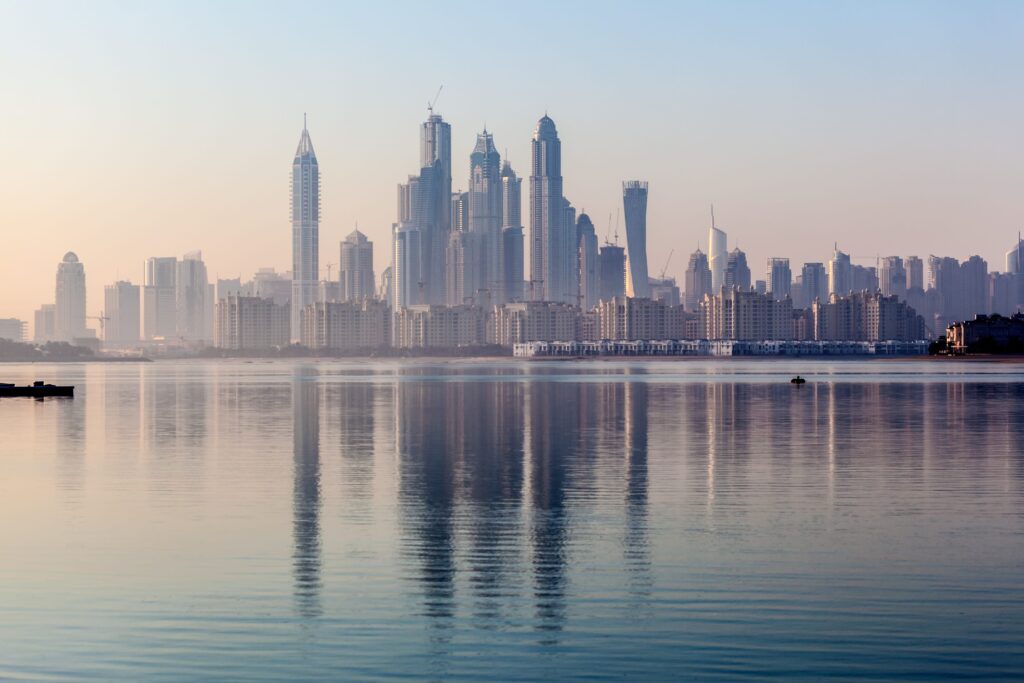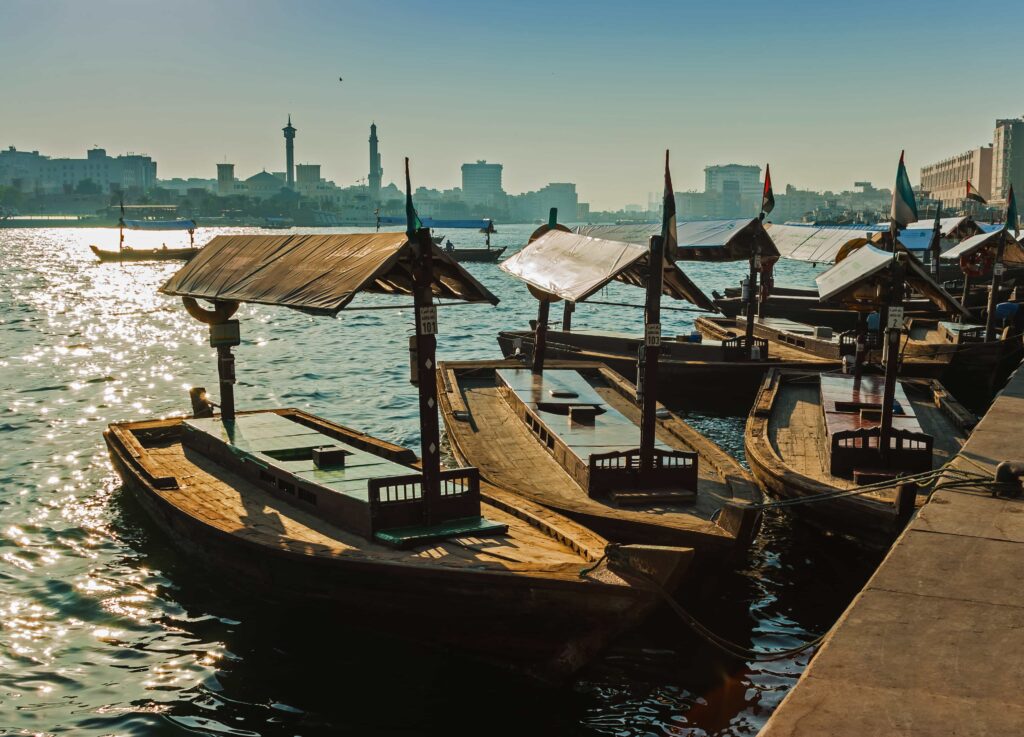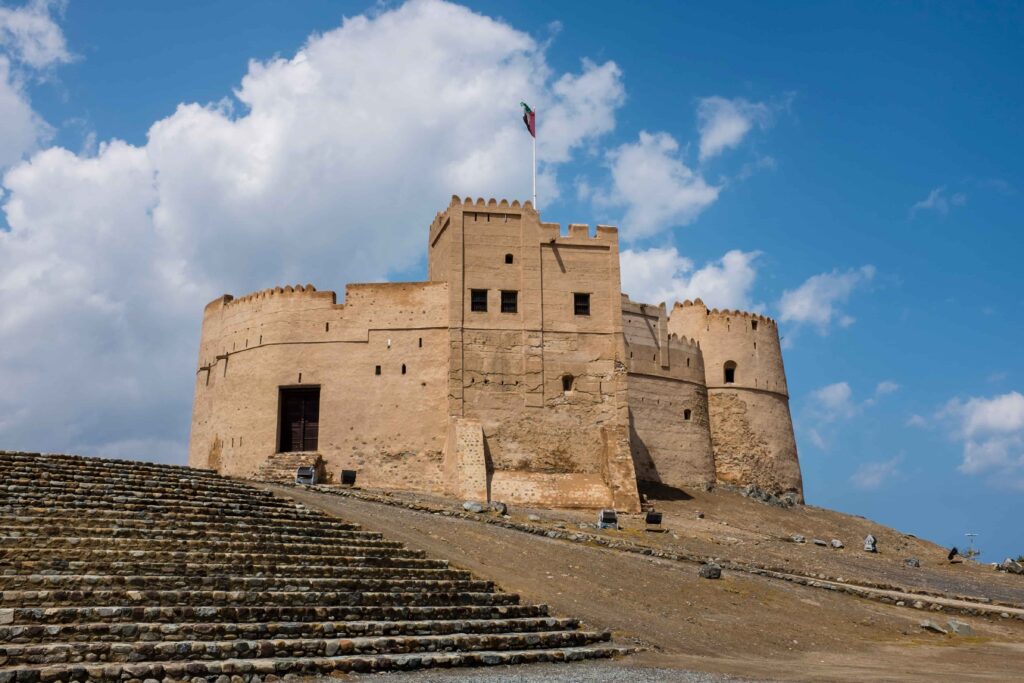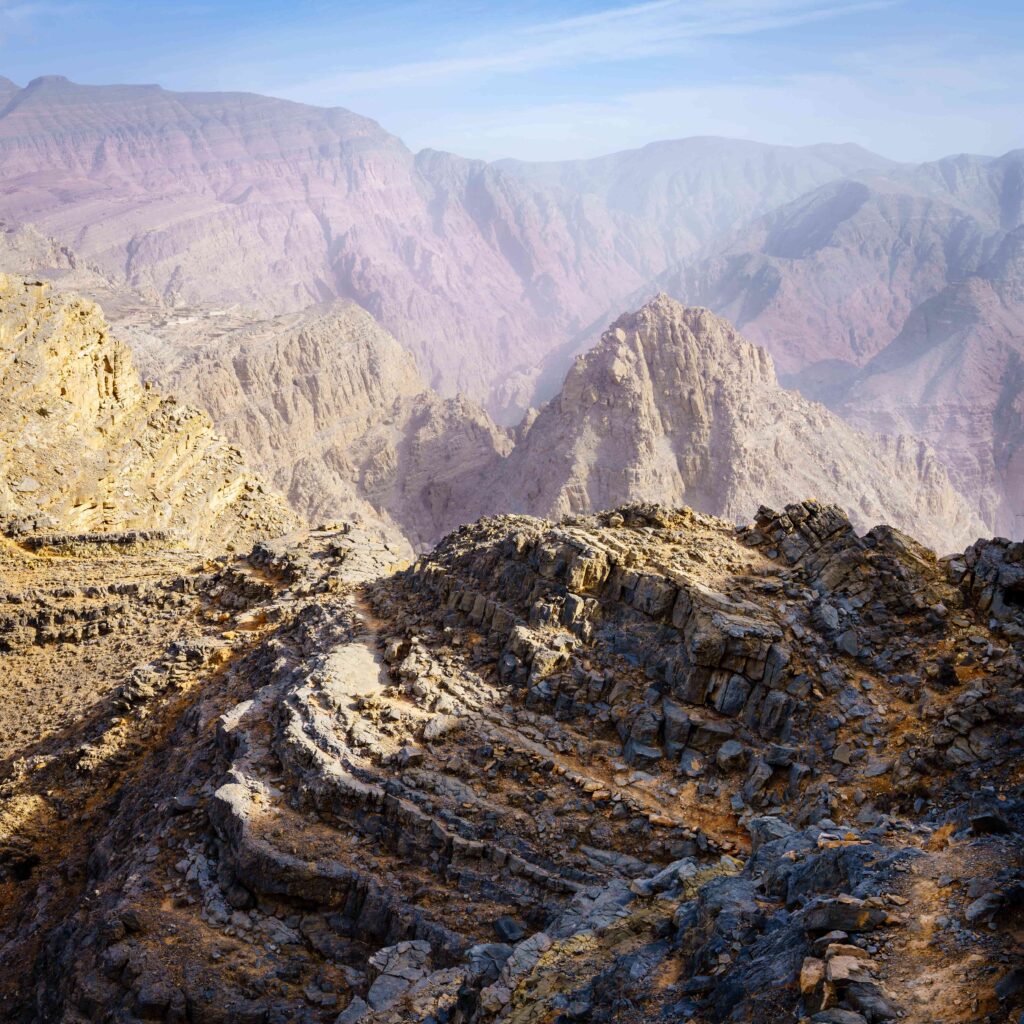UAE History – The Wonder in Oasis
Read
The United Arab Emirates (UAE) is located in the eastern part of the Arabian Peninsula, and consists of seven emirates, and was founded on December 2, 1971; December 2nd is celebrated annually as the country’s National Day, and the government is currently planning a number of projects to celebrate the 50th National Day celebration, which will take place on December 2, 2021. Though the UAE was officially formed in 1971, making it a ‘younger’ nation than most, the region does have rich heritage from before the formal foundation of the country. Artefacts that were uncovered in the UAE show a history of human habitation and migration that span back over 100,000 years ago, providing evidence of a number of tribes that traded with coastal towns, and with the Harappan culture from the Indus Valley civilisation, amongst other ancient populations.
From nomadic tribes, to European conquests and battles along the coast, to the eventual formation of the country between the emirates’ rulers, the UAE, despite formally being so young, has a rich, colourful history behind its ultra-modern aesthetic. Today, the UAE is a modern oil-exporting country with a highly diversified economy, with each emirate boasting a number of unique sights and hotspots.
Historic beginnings
At the Jebel Faya archaeological site, primitive hand-axes as well as several kinds of scrapers were unearthed, and these basic tools resemble the tools that were used by early modern humans in East Africa, and are dated to be about 125,000 years old. This evidence is exciting, as it is the earliest evidence of modern humans found outside Africa, and provides new findings for when modern humans left Africa, implying that modern humans might have migrated earlier than previously theorised.
During the Paleolithic era, smaller Bedouin communities survived by fishing, and by collecting plants. This era is characterised by the emergence of pottery, which has been unearthed by archaeologists in the areas that are currently Sharjah, Umm Al Quwain, Ras Al Khaimah, and Abu Dhabi. During the first Stone Age, findings like stone arrows and axe heads, show human habitation in the Arabian Peninsula from around 5,000 to 3,100 BC. The Bronze Age included the Hafit period, and is named after extensive finds of burials of distinctive, beehive shaped toms in Jebel Hafeet. This period spanned from 3,200 to 2,600 BC.
The Umm al-Nar culture is also of the Bronze Age, and is derived from the island of the same name that is next to Abu Dhabi. This culture covers about six centuries, from 2,600 BC to 2,000 BC, and includes more evidence of trade with the Sumerian kingdoms, as well with the Indus Valley civilisation; this was followed by the Wadi Suq culture, which dominated the region till 1,300 BC. Key archaeological finds point to major trade cities that existed in the area, located on the Western and Eastern coasts of the UAE. It is theorised that the domestication of animals took place during this era, leading to further settlement inland, and the cultivation of crops, including the iconic date palm. Despite dwindling trade links with the Indus Valley, archaeologists have found more sophisticated implements, proving the presence of a growing, advancing civilisation.
Advent of Islam
Islam is the official religion of the UAE; Islam was established early on in the Arabian Peninsula, with the arrival of envoys from Prophet Muhammad in 632 to herald the conversion of the region to Islam. After Prophet Muhammad’s death, one of the major battles of the Ridda Wars was fought at Dibba (which is now present-day Fujairah). The defeat of the non-Muslims in this battle resulted in the triumph of Islam, and the establishment of the religion in the Arabian Peninsula.
Amr bin al’As visited the area of Oman and Sohar, and brought the Prophet’s message to the kings of Oman, while Abu Al-Ala’a Al-Hadrami visited Bahrain for the same reason, leading to the spread of Islam within the Gulf region. The Islamic civilisation flourished in the region, during the Umayyad Caliphate (between 661AD and 750 AD) and the Abbasid Caliphate (between 750 AD and 1258 AD). During this time, sea trade links were established between the Gulf and other areas in South East Asia, and along the West African oast, resulting in deeper trade routes between these regions.
European Influences
Thanks to the UAE’s location between Europe and the Far East, merchants came from India and from China, and the location was prized by Europeans, particularly the Portuguese, the Dutch, and the British. The Portuguese were amongst the first Europeans to arrive on the Arabian Peninsula, in 1498, after Vasco de Gamma’s successful trip around the Cape of Good Hope. By 1515, the Portuguese established themselves by fighting their way into the Indian Ocean and the Gulf of Oman, and reached the height of their maritime power by 1560. They took over the role of intermediary for trade between the ports of the Indian Ocean, and established a semi-monopoly on the pepper and spice trade. By the 1640s, however, the Ya’arabi forces ousted the Portuguese from Julfar and Dibba, and recaptured Muscat in 1650.
The loss by the Portuguese in this region marked the entry point for the Dutch and the English to the Middle Eastern markets, with the Dutch becoming a dominant naval power in the Indian Ocean and the Arabian Gulf by the 17th century, thanks to a profitable agreement for the trade in silk with Shah Abbas I. By the 1750s, however, Dutch power weakened in the area due to three-way warfare between the Dutch, the English, and the French.
The 1700s marked the rise in trade between the British and the Gulf region, and the British were primarily concerned with safeguarding their trade links to India, and preventing other European competitors. A number of conflicts took place between the British and Al Qawasim in the 18th century. After a number of incidents where British ships had fallen foul of Al Qawasim, an expeditionary forcke embared for Ras Al Khaimah in 1809, and a peace treaty was signed between the British and the leader of Al Qawasim, which broke down in 1815. After defeating the Qawasims, the British signed a series of agreements from 1820 to 1852 with the sheikhs of the individual emirates, to ensure peace at sea and refrain from erecting fortifications along the coast. However, despite these agreements, regular naval warfare between the Arab tribes was still prevalent.
The British ties were made with the Trucial States (the name the British government gave to the tribal confederations in the Arabian Peninsula), and the agreement ensured that the Emirates would not cede any territory except to the United Kingdom, and to refrain from engagement with any foreign government other than the United Kingdom, without prior consent. In return, the British promised to protect the coast from all aggression by sea and to provide assistance during any land attacks. By the 1960s, Britain’s imperial reach was bankrupt, and politically exhausted. In early 1968, the British declared their intention to withdraw from the Gulf, by the end of 1971.

The pearling industry, and fresh beginnings
Meanwhile, the pearling industry rose and fall in the late nineteenth and early twentieth century; it was part o the main economy of coastal communities across Eastern Arabia, and by 1907, over 4,000 pearling boats were operating from Gulf ports. Thanks to huge rise in demand by the expanding European and Indian markets during this time, pearling became quite profitable, and thousands of local ships would gather with provisions to last up to three months at sea. However, the Japanese cultured pearl started to be produced in commercial quantities in the late 1920s. The influx of inexpensive, high quality pearls devastated the Gulf pearl markets, resulting in the fall of the pearling industry during this time. (Read about Old Dubai and Deira)

In the early 1930s, however, the first oil company teams conducted surveys in the UAE, and thirty years later, the first cargo of crude oil was exported from Abu Dhabi. With the economy steadily growing, Sheikh Zayed (Abu Dhabi’s ruler) ensured that there were increased contributions to the Trucial States Development Fund, while Sheikh Rashid bin Saeed Al Maktoum (Dubai’s ruler) replaced pearling revenues by becoming a part of the shipping industry, and began exporting oil in 1969. With the British announcing their withdrawal in 1968, Sheikh Zayed called for a federation that would not only include the seven Emirates but also include Qatar and Bahrain in an attempt to establish closer ties. Bahrain and Qatar preferred independence on their own, leaving the seven Emirates to form their own country.
Foundation of the United Arab Emirates
The foundation of the UAE was a big step taken by the separate emirates as the Arab World had never seen a successful federation of disparate pieces, but Sheikh Zayed, along with Sheikh Rashid bin Saeed Al Maktoum, met in February 1968 and proposed a federation. In July, 1971, plans were made to form a union between the (then six) emirates, and the Council ensured that the country would be recognised as an independent sovereign state that was a part of the Arab World. A provisional constitution was adopted, and Abu Dhabi was approved to be the provisional capital. Sheikh Zayed, Abu Dhabi’s ruler, was elected as the first President, while Sheikh Rashid, Dubai’s ruler, was elected as the Vice-President.
When the British-Trucial Sheikhdoms treaty expired on December 1, 1971, the Trucial States became fully independent sheikhdoms, and four other Trucial states (Ajman, Sharjah, Umm Al Quwain, and Fujairah) joined Abu Dhabi and Dubai in signing the UAE’s founding treaty, with a constitution drafted by December 2nd. On that date, the emirates agreed to enter into a union, to be called the United Arab Emirates. Ras Al Khaimah joined this union in early 1972, resulting in the inclusion of all the seven emirates that formed the earlier ‘Trucial States’. Since this iconic formation, the seven Emirates have formed a distinct national identity, and the country’s political system has been designed to ensure that the country’s longstanding heritage is maintained and preserved, while still adapted to modern times by combining older, traditional customs with a more modern administrative structure.
The seven emirates banded together to form the federation as the emirates shared many commonalities with each other, including a common language, common religion, similar customs and resources, and shared aspirations for their people and for the future. The federation was established to maintain the UAE’s independence, provide stability to the citizens of the state, protect the people’s rights and freedoms, and respect the independence and sovereignty of other emirates with regards to their internal affairs, within the framework of the constitution. The UAE was recognised as a state in December, 1971, by the United Nations Security Council, and co-founded the Gulf Cooperation Council (GCC),along with Bahrain, Saudi Arabia, Kuwait, Qatar, and Oman.

In terms of political freedom, the country is ruled by the seven emirs and is a monarchy, though there is an electoral college system in place, established in 2006. Through this system, representatives are voted onto an advisory council that serves the sheikhs that rule the separate emirates, who also form the Supreme Council.
The UAE today is a formidable nation, despite being smaller in size than most countries. Having had incredible economic growth thanks to the oil boom, the country has grown over the past 40-odd years to become the hub of the Arab World. Despite the financial crisis in 2008 (which was deeply felt, especially in Dubai), the country managed to bounce back; though Dubai did have rising debts, a loan from Abu Dhabi helped Dubai avoid defaulting on its obligations, and the city was able to unveil the Burj Khalifa (the tallest building in the world) the following year. Indeed, Dubai is recognised by people around the world for its tourist hotspots, and the UAE hosts millions of tourists every year, with many more pouring in to start their lives in the rapidly growing country. The government focuses on maintaining stability in the region, and also promotes a business-friendly environment.
Sources
1) https://www.uae-embassy.org/about-uae/history
2) https://u.ae/more/history-of-the-uae
3) https://www.britannica.com/place/United-Arab-Emirates/History
4) https://www.thoughtco.com/united-arab-emirates-won-independence-2353661
This disclaimer informs readers that the views, thoughts, and opinions expressed in the text belong solely to the author, and not necessarily to the author’s employer, organization, committee or other group or individual. We take no liability for the accuracy of the information and cannot be held liable for any third-party claims or losses of any damages.
This disclaimer informs readers that the views, thoughts, and opinions expressed in the text belong solely to the author, and not necessarily to the author’s employer, organization, committee or other group or individual. We take no liability for the accuracy of the information and cannot be held liable for any third-party claims or losses of any damages.
